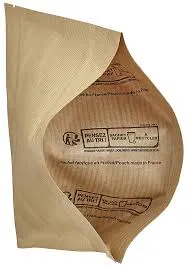- Afrikaans
- Albanian
- Amharic
- Arabic
- Armenian
- Azerbaijani
- Basque
- Belarusian
- Bengali
- Bosnian
- Bulgarian
- Catalan
- Cebuano
- chinese_simplified
- chinese_traditional
- Corsican
- Croatian
- Czech
- Danish
- Dutch
- English
- Esperanto
- Estonian
- Finnish
- French
- Frisian
- Galician
- Georgian
- German
- Greek
- Gujarati
- haitian_creole
- hausa
- hawaiian
- Hebrew
- Hindi
- Miao
- Hungarian
- Icelandic
- igbo
- Indonesian
- irish
- Italian
- Japanese
- Javanese
- Kannada
- kazakh
- Khmer
- Rwandese
- Korean
- Kurdish
- Kyrgyz
- Lao
- Latin
- Latvian
- Lithuanian
- Luxembourgish
- Macedonian
- Malgashi
- Malay
- Malayalam
- Maltese
- Maori
- Marathi
- Mongolian
- Myanmar
- Nepali
- Norwegian
- Norwegian
- Occitan
- Pashto
- Persian
- Polish
- Portuguese
- Punjabi
- Romanian
- Russian
- Samoan
- scottish-gaelic
- Serbian
- Sesotho
- Shona
- Sindhi
- Sinhala
- Slovak
- Slovenian
- Somali
- Spanish
- Sundanese
- Swahili
- Swedish
- Tagalog
- Tajik
- Tamil
- Tatar
- Telugu
- Thai
- Turkish
- Turkmen
- Ukrainian
- Urdu
- Uighur
- Uzbek
- Vietnamese
- Welsh
- Bantu
- Yiddish
- Yoruba
- Zulu
Converting 100gsm Paper Weight to Pounds for Accurate Measurements
Converting 100 GSM Paper to Pounds Understanding Paper Weights
When it comes to paper, weight is an essential factor that affects many aspects of its use, from printing to packaging. One common measurement for paper weight is grams per square meter (GSM), which is widely used outside the United States. In the U.S., paper weight is typically expressed in pounds (lbs). This article aims to explore the conversion of 100 GSM paper to pounds, why this conversion matters, and how to make sense of paper weights in your printing and crafting projects.
Understanding Paper Weights
Before diving into conversions, it’s important to understand what these measurements mean. GSM refers to the weight of a single square meter of paper. A higher GSM indicates a thicker, heavier paper, which is often more suitable for tasks requiring durability and quality, such as business cards, brochures, and flyers. In contrast, lighter papers (lower GSM) may be used for everyday printing, such as letters and drafts.
Conversely, the pounds measurement (lbs) refers to the weight of a ream (typically 500 sheets) of paper cut to a standard size, which in the U.S. is often 17 x 22 inches for most types of paper. This can lead to confusion, as different paper types (like bond, text, and cover stock) with the same GSM can have different pound classifications due to their thickness and density.
Converting 100 GSM to Pounds
To convert 100 GSM to pounds, we need to use a standard conversion formula. While the relationship between GSM and pounds can vary slightly depending on the type of paper, a general guideline for such conversions is as follows
1. Determine the Size For uncoated standard paper, the typical conversion factor is approximately 2.20462. 2. Calculate To convert 100 GSM to pounds - Multiply the GSM value by the conversion factor \[ \text{Weight in lbs} = \text{GSM} \times 0.00220462 \text{ (conversion factor)} \] - Therefore, \[ 100 \text{ GSM} \times 0.00220462 \approx 0.220462 \text{ lbs} \] - But to find the weight of a ream, we consider that a standard ream weighs 500 sheets. Thus \[ 0.220462 \text{ lbs} \times 500 \approx 110.231 \text{ lbs} \]
Through this method, one can deduce that 100 GSM paper translates to roughly 110 lbs when referring to the weight of a ream. This calculation is vital for those in the printing and crafting industries, as it helps to determine the right paper for specific projects.
100gsm paper to lbs

Why Conversion Matters
Understanding the weight and how to convert between GSM and pounds is crucial for several reasons
1. Consistency in Quality Different projects require different paper qualities. Knowing how to convert weights allows you to select the most appropriate paper for your needs, ensuring that your prints stand out and maintain a professional appearance.
2. Cost-Effectiveness Selecting the right weight can significantly impact budgeting. Thicker papers tend to be more expensive but may also yield better results. Knowing the equivalent weights helps you navigate pricing with better accuracy.
3. Printing Guidance Many printers provide guidelines based on paper weight and type. When clients request specific GSM, knowing its pounds equivalent enables clearer communication with the printer.
4. Enhanced Decision Making In crafting and arts, selecting the correct paper thickness can affect the project's outcome. Whether you're making a scrapbook or printing a professional portfolio, understanding paper weight helps you make informed choices.
Conclusion
In conclusion, converting 100 GSM paper to pounds is an essential skill for anyone involved in printing, crafting, or any paper-related project. Knowing how the weights correlate not only simplifies the selection process but also enhances the quality of the final product. As paper plays a significant role in communication and visual appeal, understanding its weight—whether in GSM or pounds—can make all the difference. Therefore, the next time you choose paper for your project, remember these conversions, and make decisions that reflect quality and professionalism.













